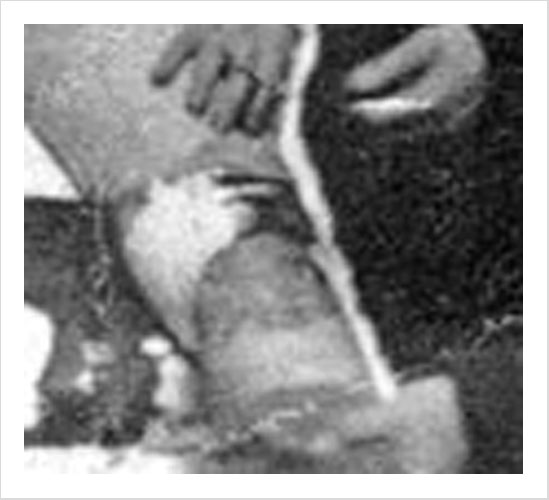
Errors turn up in the bibliographical accounts of EDD Nos. 3-5 as well. Lowry & Lowry proposed that these three photographs – two daguerreotypes, extant, and a paper copy of one since lost – were shot "three or four weeks later," and they referenced an operation for necrotic tibia conducted by Dr. Solomon D. Townsend on April 24, 1847.(95) However, in 2009 Dr. Haridas corresponded with MGH curator and archivist Jeffrey Mifflin and learned details of the Townsend operation that confute the Lowrys's attribution, relating how Townsend's operation performed that day was for necrosis of the right tibia, not the left.(96) Considering the surgery depicted by the daguerrotypes was performed on the patient's left leg, and Dr. John Collins Warren is the lead surgeon in the photo, I propose that EDD Nos. 3-5 capture three views of a surgery registered on Bigelow's tables for "disease of the fibula" – not tibia – prosecuted on the following July 3rd. It was another of Townsend's patients for whom Warren assumed responsibility of the surgery: a 19-yr-old Portuguese sailor, named Francis Manuel, with no discharge date, pending a second surgery.(97 »»)

Enlarged detail from EDD No. 5, a paper copy of a lost daguerreotype. The image shows the completion of the surgery with the patient on his stomach. Partially visible is the four-inch incision over the posterior head and shaft of the fibula. The instrument Dr. Warren is holding, if it isn't a scrape in the photograph, is too blurry to identify.
Francis Manuel broke his leg at sea and complications arose when the suspected fracture failed to heal after many months of leeching and increasing pain. By the time of the operation, a "considerable projection" of "osseous, cartilaginous and fibrous" effusion had formed on the outer side of the leg just below the knee. Just prior to the surgery, Dr. Jonathan Mason Warren can be seen palpating the mass in Ether Dome Daguerreotype No. 3, and his father has his hand on the sailor's leg, also indicating the limb he will be operating on. I believe the daguerreotype is actually the second in the sequence of the three photographs, not the first, and should be renamed EDD No. 4.
The three daguerreotypes portray the first of two operations for treating an osteoma over the fibula of Francis Manual's left leg. On this day, July 3, 1847, the lead surgeon John Collins Warren conducted an exploratory procedure and intervention that lasted thirty minutes including consultations, and revealed diagnostic signs of spina ventosa (osseous sero-cystic tumor) with a sizeable osteoma of the fibula closing off the interosseal space. His report on the young Portuguese sailor is one of the more detailed narratives in his classical monograph on the physiological effects of etherization across a range of procedures for a variety of patients, including a case of epulis in an emotionally disturbed "lady." (98 »») The two operations were separated by a space of three months and culminated in transverse amputation of the lower leg on Oct. 2, with sectioning of the young sailor's fibula up to the head, which was found healthy. After the amputation Warren found no indications of a fracture in the dissected part, nor any signs of malignancy, and in his personal notes on the case he expressed dissatisfaction with the operation, thinking he could have spared the limb, but adding the limb might have remained troublesome in life.(99 »»)
95.) Lowry & Lowry (2005); pp. 82, 88.
96.) Haridas, RP (2010); p. 20.
97.) Hayward, G (1850); Table II, p. 13. Name of the patient documented. According to Hayward, the patient was admitted on June 14, 1847 and the amputation took place on October 2. Discharge date was the following May 20, 1848. Bigelow's table records July 3 for the first surgery which gave some relief, but failed to arrest the disease.
98.) Warren, JC (1848); p. 50-52. This was the first of two operations. There is a Warren Museum Catalog specimen of a 6-inch fibula (no. 1326, p. 247) dated 1847, but it is fusiform and there is no indication of an osteoma in the description.
99.) Warren, E (1860), "The Life of John Collins Warren, M.D.: Compiled Chiefly from His Autobiography and Journals." Boston: Ticknor & Fields; vol. 2, p. 191.
